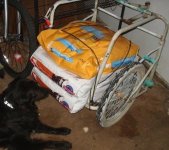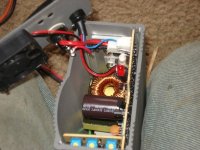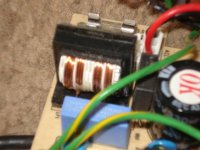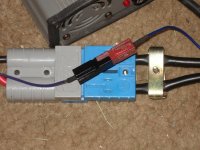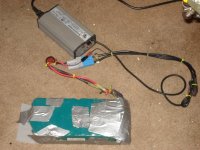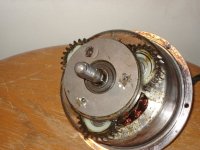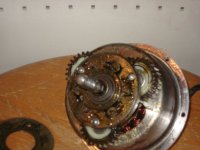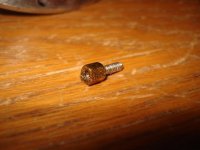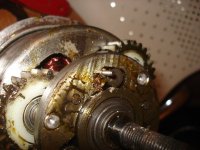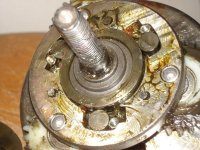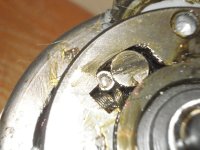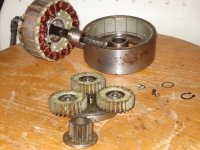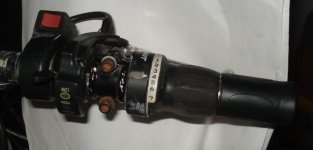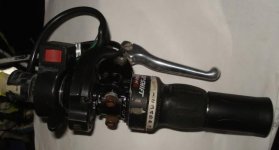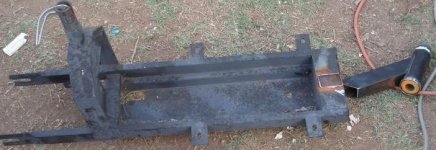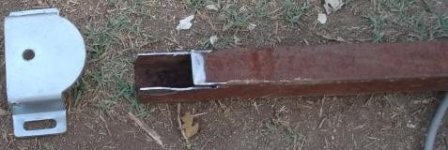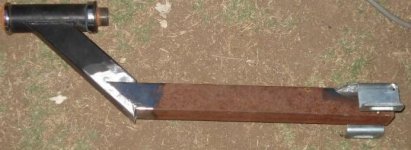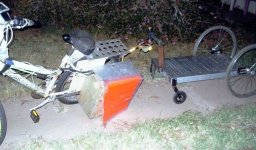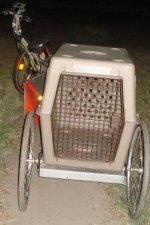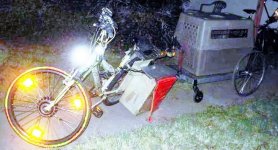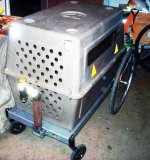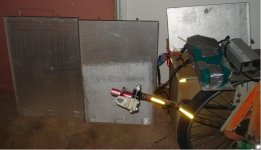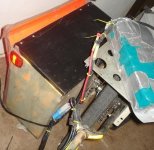I realized after I got some questions about the trailer that I had not posted pics of the bike-end hitch.

Basically, it's a U-fork off a 26" bike, with it's dropout ends bolted to the accessory hardpoints on DGA's rear dropouts. Part of a cheap steel stem is inserted into that, but not using the jamnut/wedge. Instead, a piece of allthread has a washer (the same diameter as the inside of the steering tube on the fork) trapped between two nuts and lockwashers at it's far end, and the washer is welded to the tube at two points on it's edge by having drilled a hole in the tube so I could see the washer and ensure a good weld to it.
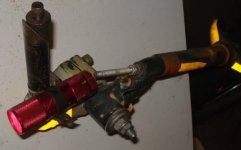
Then the allthread is fed into the stem, as the stem is inserted onto it down into the tube just like normal, and a nylock nut on the allthread pins the stem into the tube so it can't come out. A second stem, this one off a BMX type bike, is placed with it's handlebar clamp parallel to the first stem's clamp, and a long bolt is passed thru them both, with a few washers about the same size as handlebar tube along the bolt within the clamps, to give the clamps something to hold to and keep the bolt from wiggling around. A larger washer between the stems prevents binding, and at least one at each end holds them together.
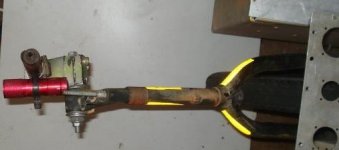
It is quite stiff to move by hand, but the weight of the trailer easily moves it around. Stiffness makes it easier to attach the trailer, and keeps it from bouncing around when I ride without the trailer. The trailer simply is lifted down onto the upward-pointing stem, and the stem bolt is tightened to keep the trailer from being removed easily (it probably could never fall off unless a bolt shears). The red flashlight is a taillight to mark the stem, just hoseclamped on. (I do not yet have regular lighting back on DGA). Also has 3M reflective tape on there. I only have yellow and white, so white is used up front half of the bike, and yellow in back. Rather have red, but I use what I have.

You can also see the rest of the fork and where it goes to the dropouts. There is a diagonal brace from the fork to the right side panel that prevents it from vertically pivoting; this is so that my two-wheel trailer will function. The four-wheel does not need this, so I could take it off if I wanted better leaning ability, but it needs to stay for backwards compatibility with the other trailer.
Any weight capacity tests yet?
I originally tested the idea of the trailer way back by bolting on the quickrelease wheelholders and the casters, snapping in the wheels, then standing on the bed and gently hopping up and down a little. I figure that with my ~150lbs plus gravity I probably put 200+ lbs onto it like that, for a static test. The faceplate bows a little because of the concentration of all that weight in one spot, but nothing gave.
I couldn't do load tests with previous hitches because their turning ability was too poor to continue with them. Another problem is that the hitch I most wanted to use, the crutches extending out the front from underneath, level with the flatbed, with the headrest balljoint at the bike, shimmied a lot when over about 8MPH. I'm not sure why.
Now that a hitch works, having the ~10lbs of kennel on there plus Hachi (~55lbs now), it works fine, although when she wiggles around in there it's hard to ride straight. It has not been tested with this hitch at speeds greater than about 10MPH though, nor on rough roads, just around the block at home.
I plan on filling the kennel with all the lead-acid batteries I have, and anything else small and heavy, like transformers, etc. Then testing it around the block at various speeds, and trying to deliberately run it into the rougher edges of the roads.
Does the hitch assembly limit the ability to lean into turns?
Not much. With the two-wheel trailer it did not limit it at all, since the front of the trailer could dive down a little to compensate for the lower hitch height during the lean.
With the front wheels of this trailer preventing that dive, I probably can't lean as far in a turn as otherwise, but I can fix that by altering the mount of the bike-side hitch to allow vertical pivoting. I could not do that with the two-wheel trailer or it would just drag the front on the ground.
That said, most of the time when I'm pulling this trailer, I'll likely have it loaded up enough to not be going fast enough to require much of a lean on turns.

Or I'll have the dogs in it and be trying to give them a comfy ride rather than an exciting one.

I can still use the old trailer for anything that might require more leaning, but I might end up preferring the new trailer over it. We'll see.




